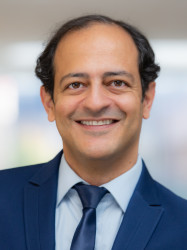BibTex format
@inproceedings{Cheraghchi:2016:10.1137/1.9781611974331.ch23,
author = {Cheraghchi, M and Indyk, P},
doi = {10.1137/1.9781611974331.ch23},
pages = {298--317},
publisher = {SIAM},
title = {Nearly optimal deterministic algorithm for sparse Walsh-Hadamard transform},
url = {http://dx.doi.org/10.1137/1.9781611974331.ch23},
year = {2016}
}

